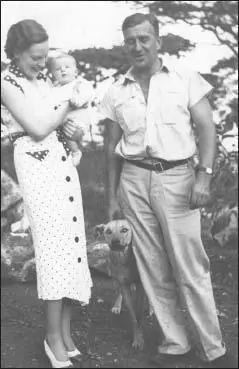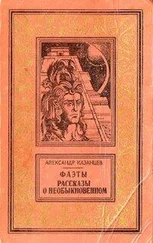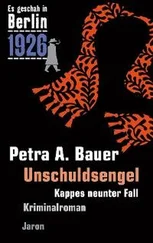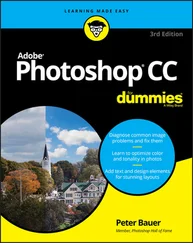Peter Petter-Bowyer - Winds of Destruction
Здесь есть возможность читать онлайн «Peter Petter-Bowyer - Winds of Destruction» весь текст электронной книги совершенно бесплатно (целиком полную версию без сокращений). В некоторых случаях можно слушать аудио, скачать через торрент в формате fb2 и присутствует краткое содержание. Город: Solihull, Pinetown, Год выпуска: 2012, ISBN: 2012, Издательство: Helion & Company, 30° South Publishers, Жанр: Биографии и Мемуары, на английском языке. Описание произведения, (предисловие) а так же отзывы посетителей доступны на портале библиотеки ЛибКат.
- Название:Winds of Destruction
- Автор:
- Издательство:Helion & Company, 30° South Publishers
- Жанр:
- Год:2012
- Город:Solihull, Pinetown
- ISBN:9781908916754
- Рейтинг книги:5 / 5. Голосов: 1
-
Избранное:Добавить в избранное
- Отзывы:
-
Ваша оценка:
- 100
- 1
- 2
- 3
- 4
- 5
Winds of Destruction: краткое содержание, описание и аннотация
Предлагаем к чтению аннотацию, описание, краткое содержание или предисловие (зависит от того, что написал сам автор книги «Winds of Destruction»). Если вы не нашли необходимую информацию о книге — напишите в комментариях, мы постараемся отыскать её.
Winds of Destruction — читать онлайн бесплатно полную книгу (весь текст) целиком
Ниже представлен текст книги, разбитый по страницам. Система сохранения места последней прочитанной страницы, позволяет с удобством читать онлайн бесплатно книгу «Winds of Destruction», без необходимости каждый раз заново искать на чём Вы остановились. Поставьте закладку, и сможете в любой момент перейти на страницу, на которой закончили чтение.
Интервал:
Закладка:
Dad was christened Paul Charles Petter Bowyer. The third Christian name was in fact his mother’s maiden name. The Petters were, and still are, well known for their internal-combustion engines and other engineering successes. For instance, William Petter was designer and chief engineer of Britain’s Canberra bomber, Lightning interceptor and Gnat trainer. Prior to this, William’s father had designed the famous short-field aircraft, Lysander, which gave such excellent service to special agents and the French Resistance during World War II.
In New Zealand Dad’s banking affairs were getting muddled up with another Bowyer. All efforts to rectify the situation failed until Dad hyphenated his name—to become Petter-Bowyer. Though this resolved his problem and fitted a fashion for double-barrelled names in those times, the surname has presented its difficulties over the years.
When I joined the Royal Rhodesian Air Force my surname was short-circuited. Nobody could pronounce Petter-Bowyer correctly so I became known as ‘PB’. It is the name Bowyer that seemed to cause problems to many until I explained that my ancestors were men who equated to modern-day artillery-fire controllers. In their own day the Bowyers trained and controlled groups of bowmen in battle. During critical stages when British and enemy forces were closing on each other, it was the bowyers who gave bowmen their orders on aiming angle, draw strain, lay-off and release, for each volley of arrows launched against rapidly changing enemy formations. When BOW of the arrow launcher replaces BOUGH of the tree or BOY of youth, my surname comes out okay!
Dad was six-foot tall, good-looking and immensely strong. Not long after arriving in Rhodesia he attended a country fair at Penhalonga in the east of the country. Late in the evening he was walking past an ox-wagon where an elderly man asked for his assistance. Dad was happy to comply by lifting a large blacksmith’s steel anvil from the ground onto the deck of the wagon. When he had done this he became aware of shouted congratulations and slaps on his back from a group of people he had not noticed until then. The elderly man also congratulated him and with great difficulty pushed the anvil off the wagon. He then invited Dad to lift the anvil back onto the wagon, this time for a handsome cash prize that none of many contenders had won. Dad tried but no amount of cheering and encouragement helped him even lift the anvil off the ground.
Mum moved with her parents to Southern Rhodesia in 1914 when she was four years of age. Her father was controller of the Rhodesian Railways storage sheds in Salisbury. He, together with Mum’s mother, ran a dairy and market garden on their large plot of land, one boundary of which bordered the bilharzia-ridden Makabusi River, south of the town.
Mum attended Queen Elizabeth School in Salisbury where she acquired a taste for the high-society lifestyle of her friends, though this was not altogether to the liking of her middle-class father. She was christened Catherine Lillian Elizabeth but became known as Shirley because of her striking resemblance to a very beautiful and well-known, redheaded actress of the time. This nickname stuck to Mum for life; and she loved it. Her maiden name, Smith, on the other hand did not suit the image Mum desired. However, that all changed when she married Dad in early 1935.
Dad enjoyed the company of many male friends at the Salisbury City Club. It was from there that he went to register my birth following a lunchtime session to celebrate the birth of his first-born son. I guess he must have been fairly tipsy because he added an extra name to the ones he had agreed with my mother. To Peter John he added another family name, Hornby. In consequence, three of my names link me to family lines in sea, rail and air.
Two years after my birth my brother Paul Anthony (Tony) was born. Together we enjoyed a carefree childhood in the idyllic surroundings of the Rhodesian highveld. Our westward-facing home was set high on a ridge overlooking rolling farmlands, with the city of Salisbury and its famous kopje (Afrikaans for hill) clearly visible beyond the multi-coloured msasa trees and bushlands. From here our parents enjoyed breathtaking sunsets as they took their after-work ‘sundowner’ drinks on our spacious verandah.


Both Mum and Dad worked. Dad had his own heavy-transport business, Pan-African Roadways, and Mum was personal secretary to the Honourable John Parker who headed up the Rhodesian Tobacco Association. So, with the exception of weekends, Tony and I were left from about 07:00 until 17:30 in the autocratic care of our African cook, Tickey. Tickey was the senior man over Phineas (washing and ironing), the housekeeper Jim (sweeping, polishing and making of beds), two gardeners and, during our younger years, someone to watch over our every move. Such a large Staff was commonplace in Southern Rhodesia in those days.
Tickey was a fabulous cook. Mum had taught him everything he knew but Tickey had a knack of improving on every dish he learned though the names of some gave him difficulty. For instance, he insisted on calling flapjacks “fleppity jeckets” because the common name of the African khaki weed, black jacks, had stuck in his mind as “bleckity jeckets”.
We had more black friends than white for many years and we really enjoyed their company. Together we hunted for field mice and cooked them over open fires, before consuming them with wild spinach and sadza (boiled maize meal—the staple diet of the African people). Only people born in Africa will understand why Tony and I enjoyed these strange meals, squatting on our haunches out in the bush, just as much as roast beef and Yorkshire pudding taken at the dinner table!
Whenever possible, we limited our lunch intake to keep enough space so as to be able to join our African friends for sadza , gravy and whatever they produced as muriwo (supporting relish). Meat was usually cooked extensively to give it a burnt surface from the barely wet base of a three-legged cooking pot set over a small fire. Once the meat was ready, spinach, tomatoes and onions might be added and cooked until well done. On a separate fire a larger pot was used to boil water before mielie-meal was added in small quantities and stirred continuously with a mixing paddle until the texture was just right. All participants in the meal would then wash their hands in a communal bowl and squat on haunches in a circle around two and sometimes three bowls of food.
Only one hand was used to scoop up a lump of boiling hot sadza that was then manipulated into the shape of a rugby ball, sufficient in size for three mouthfuls. Severe burning of fingers was avoided by knowing exactly how to use the side of the index finger during pick-up, immediately followed by quick thumb and finger movements to change the point of contact of the steaming lump. The end of the lump was then dipped in the relish for each bite, following strict observance of sequence to ensure that everyone had equal share. All the time someone within the circle would be talking. These were noisy affairs with much laughter. There is no such thing as silence during an African meal. Tony and I loved every moment of those far-off but never forgotten delights.
Читать дальшеИнтервал:
Закладка:
Похожие книги на «Winds of Destruction»
Представляем Вашему вниманию похожие книги на «Winds of Destruction» списком для выбора. Мы отобрали схожую по названию и смыслу литературу в надежде предоставить читателям больше вариантов отыскать новые, интересные, ещё непрочитанные произведения.
Обсуждение, отзывы о книге «Winds of Destruction» и просто собственные мнения читателей. Оставьте ваши комментарии, напишите, что Вы думаете о произведении, его смысле или главных героях. Укажите что конкретно понравилось, а что нет, и почему Вы так считаете.












